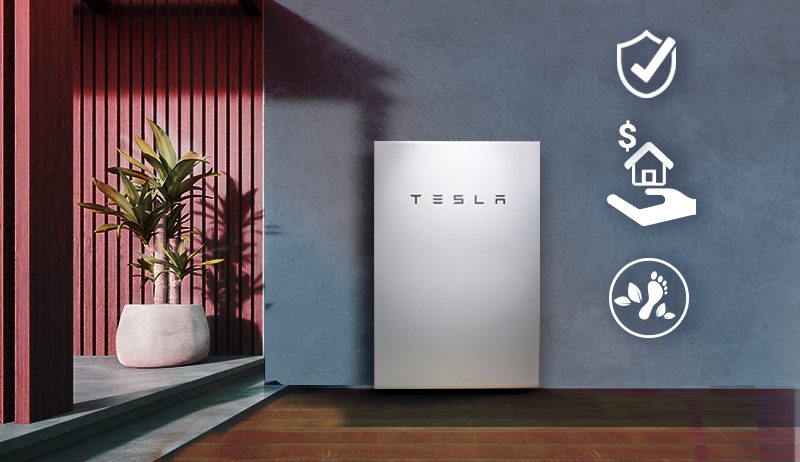Renewable Energy
New Jersey’s Electricity Rate Crisis Is A Perfect Storm for Wind Energy
Weather Guard Lightning Tech

New Jersey’s Electricity Rate Crisis Is A Perfect Storm for Wind Energy
New Jersey ratepayers received an unwelcome surprise in June 2024 when electricity rates jumped between 17 and 20 percent virtually overnight. But behind the dramatic increase is a much larger story about the challenges facing renewable energy deployment, grid modernization, and the future of power generation across the PJM Interconnection region—one that has significant implications for the wind energy industry.
According to Kyle Mason, Associate Planner at the Regional Plan Association, the rate spike stems from record high prices in PJM’s annual capacity auction, which secures power for peak grid loads. PJM operates the grid for New Jersey and 12 other states, covering over 60 million people. The capacity market’s unprecedented pricing “trickled down to increased electricity rates for New Jersey rate payers,” Mason explained.
Old Grid, New Demands
“We have a very old grid, and we’re trying to update it in real time,” said RPA’s Robert Freudenberg – while bringing more energy onto the system. “It’s like trying to build the plane while you’re flying it.”
Freudenberg, Vice President of the Energy & Environment Program at RPA, described the crisis as a convergence of multiple factors: the grid’s age presents challenges, the interconnection process has slowed dramatically, and demand is skyrocketing.
The interconnection queue process, which once took a few years, now stretches across many years. According to Mason, as of April of last year, over 200 gigawatts of projects sat waiting for study in the interconnection queue, with approximately 98 percent comprising solar, wind (both onshore and offshore), and storage. Even if only half of those projects eventually come online, Mason noted, “it would markedly improve the rate situation.”
Unprecedented Demand Growth
The energy demand situation is compounded by explosive load growth, driven largely by artificial intelligence and data centers. Mason noted that current projections show load growth reaching five percent annually—levels, he said, “we have not seen…since air conditionings were invented.”
These aren’t small facilities. “The industry is seeing massive, massive expansion of data centers,” Mason said. “Not just small data centers that we saw expand during the years leading up to the dot-com bubble, but rather these massive hundred-plus megawatt data centers,” primarily concentrated in Northern Virginia, New Jersey, Pennsylvania, and Ohio.
By 2030, data centers alone could account for 10 to 12 percent of electricity demand on the PJM grid—a staggering figure that underscores the urgency of bringing new generation capacity online quickly.
Offshore Wind “Ideal Solution” for Energy Island
New Jersey, the most densely populated state in the country, uses more energy than it produces. Thanks to that distinction and its geographic constraints, it’s referred to as an “energy island”- where wind represents an ideal solution for large scale generation.
The state had plans for approximately five gigawatts of offshore wind capacity, including the 1,100-megawatt Ocean Wind project, which has since been abandoned. Federal policy shifts have further complicated the landscape, effectively putting offshore wind development on ice across the region.
Freudenberg pointed to the South Fork Wind farm off Long Island as proof of concept.
“If you look at the data from that, [South Fork] is performing very well. It’s reliable,” he said, noting it put a thousand people to work and stabilized rates for customers.
Grid Reliability Challenges
Adding another layer of complexity, PJM recently implemented stricter reliability rules that dramatically reduced the amount of generation qualifying as reliable.
“The buffer dropped from about 16 gigawatts of supposedly reliable energy sources to about 500 megawatts when the reliability requirements were issued,” Weather Guard Lightning Tech CEO and Uptime Podcast host Allen Hall notes in the interview.
“Many fossil fuel plants face reliability concerns during extreme weather events, extreme cold events,” Mason explained. That made the older plants ineligible to enter PJM’s capacity market under the new rules. That caveat simultaneously removes baseload capacity while renewable projects remain stuck in the interconnection queue.
Is PJM’s Progress Too Little, Too Late?
PJM has made some progress addressing interconnection challenges. Working with the Federal Energy Regulatory Commission, the grid operator implemented a new cluster study process that prioritizes projects on a “first ready to serve basis” rather than first-come, first-serve. Mason reported they’ve already studied over 40 gigawatts of energy, “and that’s starting to get built,” Mason said.
“But there’s the question of whether that can outpace the rising demand,” he said.
On transmission infrastructure—a critical bottleneck for wind energy—the average timeline to build high voltage transmission lines stretches to 10 years. Mason noted projects face “years and years just to get the materials to build power plants, and then 10 years with permitting costs and supply chain issues and permitting timelines to build the transmission wires.”
Policy Recommendations: States to Lead the Way
Despite federal headwinds, Freudenberg urged states to maintain momentum on offshore wind.
“States need to keep the charge on for offshore wind. They need to keep the fire burning for it,” he said, recommending that states prepare transmission infrastructure and work with developers so projects can move forward quickly when federal policy shifts.
New Jersey has taken some positive steps, recently announcing its Garden State Energy Storage Program that targets over two gigawatts of storage capacity and releasing grid modernization standards for utilities.
Of course, when utilities are required to modernize, rate payers usually foot (most of) the bill. Still, having an available, reliable energy supply is the first order of business.
For wind energy operators and stakeholders, the New Jersey situation illustrates both the critical need for renewable generation and the complex policy, infrastructure, and market challenges that must be navigated to deliver it.
As Freudenberg summarized: “The ingredients here are so good for offshore wind. Everything… the proximity, the wind speeds. All we have to do is build those things and connect them into our grid and we’ve got a lot of power.”
The question is whether policy will allow that to happen before the grid crisis deepens further. We’ll be watching closely!
Listen to the full interview with Allen Hall, Joel Saxum, Kyle Mason and Robert Freudenberg here and subscribe to Uptime Tech News, our free weekly newsletter, today!
Image: PJM https://www.pjm.com/-/media/DotCom/about-pjm/pjm-zones.pdf
https://weatherguardwind.com/could-wind-energy-reduce-new-jersey-electricity-rates/
Renewable Energy
Chopin — Music that Inspires
 There’s a story behind the piece below, Chopin’s “Heroic” Polonaise, performed by Vladimir Horowitz, the pianist most people deem to be the world’s top interpreter of Chopin.
There’s a story behind the piece below, Chopin’s “Heroic” Polonaise, performed by Vladimir Horowitz, the pianist most people deem to be the world’s top interpreter of Chopin.
Frederic Chopin was born in 1810 near Warsaw, Poland, and was known as a child prodigy as a pianist and composer by the time he was six or seven.
Russia had long ruled Poland, but in the 1820s, Russian rule grew more arbitrary, and secret societies were formed by Polish intellectuals in several cities to plot an insurrection. In November 1830, Polish troops in Warsaw rose in revolt.
Chopin moved to Paris shortly after his 22nd birthday, where he would spend the rest of his life composing, teaching, and concertizing, but his love for his native land remained fierce.
But what could he do? Chopin was a small and sickly person, barely five feet tall, perhaps 90 pounds in weight. He certainly couldn’t be a physical part of an uprising, but he could inspire his native Poles with his compositions.
There are a few good examples of his works along these lines, but the Heroic polonaise stands by itself. When I hear it, a single word comes to fore: bravery.
Enjoy, and don’t be embarrassed if you have goosebumps.
Renewable Energy
Doing What’s “Right” Is More Controversial than it Seems
 Some of us are looking for a single, simple statement to encapsulate what is going so wrong in America today, and perhaps it relates to what Aristotle says at left here.
Some of us are looking for a single, simple statement to encapsulate what is going so wrong in America today, and perhaps it relates to what Aristotle says at left here.
Even the MAGA folks think that what they’re doing is “right.” By this I mean white supremacy, mass deportation of immigrants (with or without due process), the rejection of science, and so forth.
-
Climate Change2 years ago
Spanish-language misinformation on renewable energy spreads online, report shows
-
Climate Change Videos2 years ago
The toxic gas flares fuelling Nigeria’s climate change – BBC News
-
Climate Change2 months ago
Guest post: Why China is still building new coal – and when it might stop
-

 Greenhouse Gases1 year ago
Greenhouse Gases1 year ago嘉宾来稿:满足中国增长的用电需求 光伏加储能“比新建煤电更实惠”
-

 Climate Change1 year ago
Climate Change1 year ago嘉宾来稿:满足中国增长的用电需求 光伏加储能“比新建煤电更实惠”
-
Greenhouse Gases2 months ago
Guest post: Why China is still building new coal – and when it might stop
-

 Carbon Footprint1 year ago
Carbon Footprint1 year agoUS SEC’s Climate Disclosure Rules Spur Renewed Interest in Carbon Credits
-
Renewable Energy3 months ago
US Grid Strain, Possible Allete Sale








